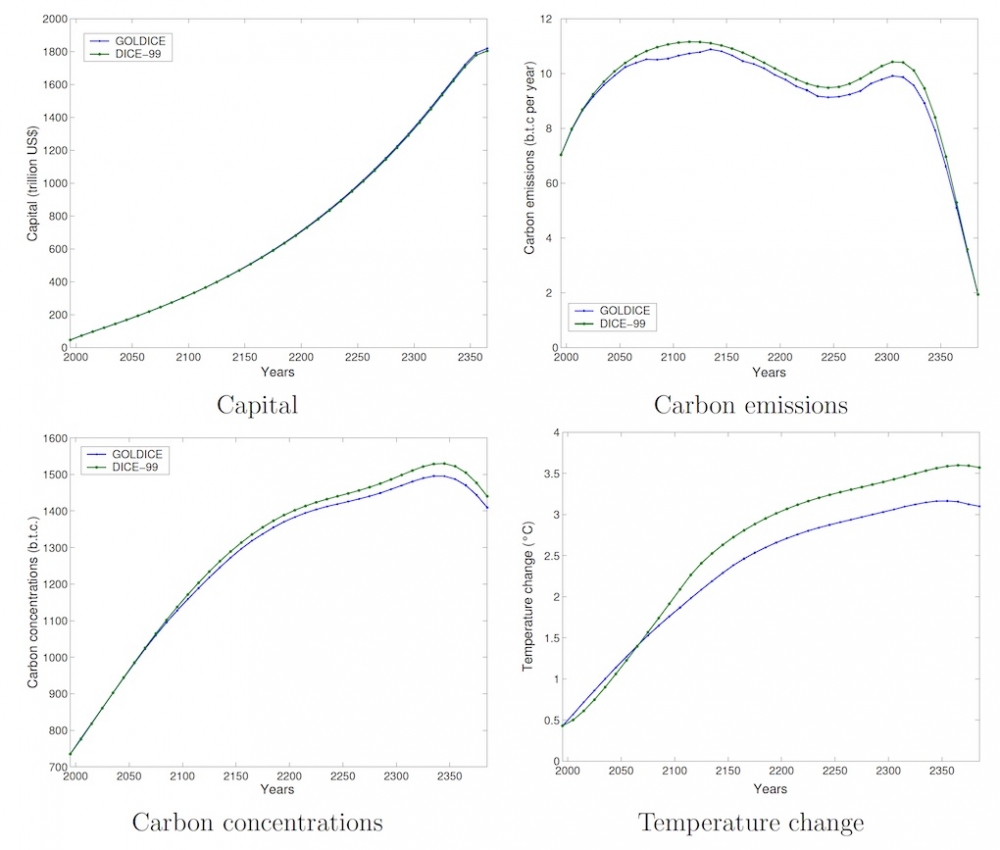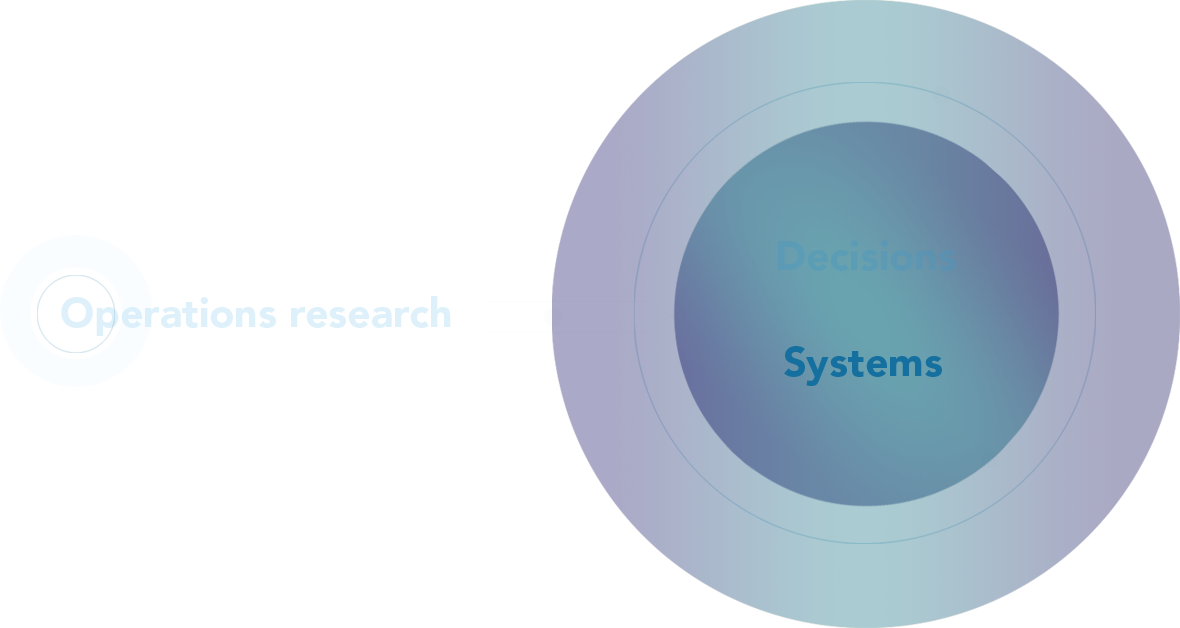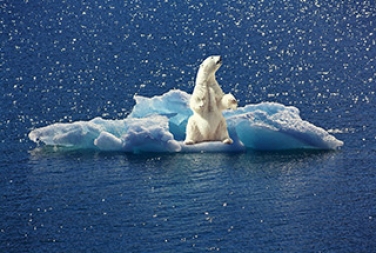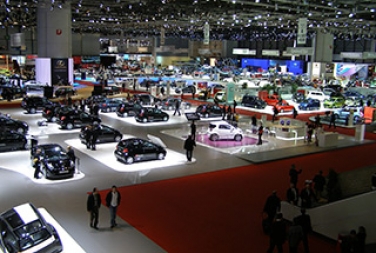The dynamics of the climate
Coupling climate and Economic dynamics
The dynamics of the climate take place over a very long period, while those of the economy are much shorter. The greenhouse gas emissions that have been associated with economic growth since the middle of the 20th century will affect the climate over a very long time. We are thus operating on two very different time scales. Climate change is studied using very large-scale dynamical models that are then integrated step by step over very long time horizons to simulate the interactions between oceans, sea ice, land, clouds, and aerosols that ultimately define the sensitivity of the climate to changes in atmospheric GHG concentrations.
Economic growth is studied using economic equilibrium models to assess the increase in the welfare of the population due to the increase in the productive capacity of economies. These economic models are much simpler and easier to use than those dealing with climate. These two dynamics are coupled by calculating the GHG emissions due to the use of fossil fuels in the production of economic goods and by using these emission profiles as forcing elements for climate models, as deducing the temperature increases to be anticipated. These temperature increases are used to define the damages that will be considered in the economic models. This results in integrated climate and economic modeling. Optimization techniques are used to construct effective climate policy scenarios.
A dialoque between Oracles
The creators of ORDECSYS mastered the techniques of high-dimensional optimisation and coupling between models of very different time and space scales. These methods have been successfully applied to help study the economics of climate change. They involve establishing a dialogue between two 'oracles', one describing the global economic system, the other the climate system. Each oracle is a mathematical model with its own complexity and very different time and space scales. The two oracles "communicate" by exchanging information contained in "coupling variables". The "Economy" oracle will propose an emissions profile and the "Climate" oracle will respond by providing a temperature increase profile as a result of the carbon cycle and the increase in GHG concentration. This temperature increase will affect the economy by causing damages that will be taken into account in a cost-benefit approach.
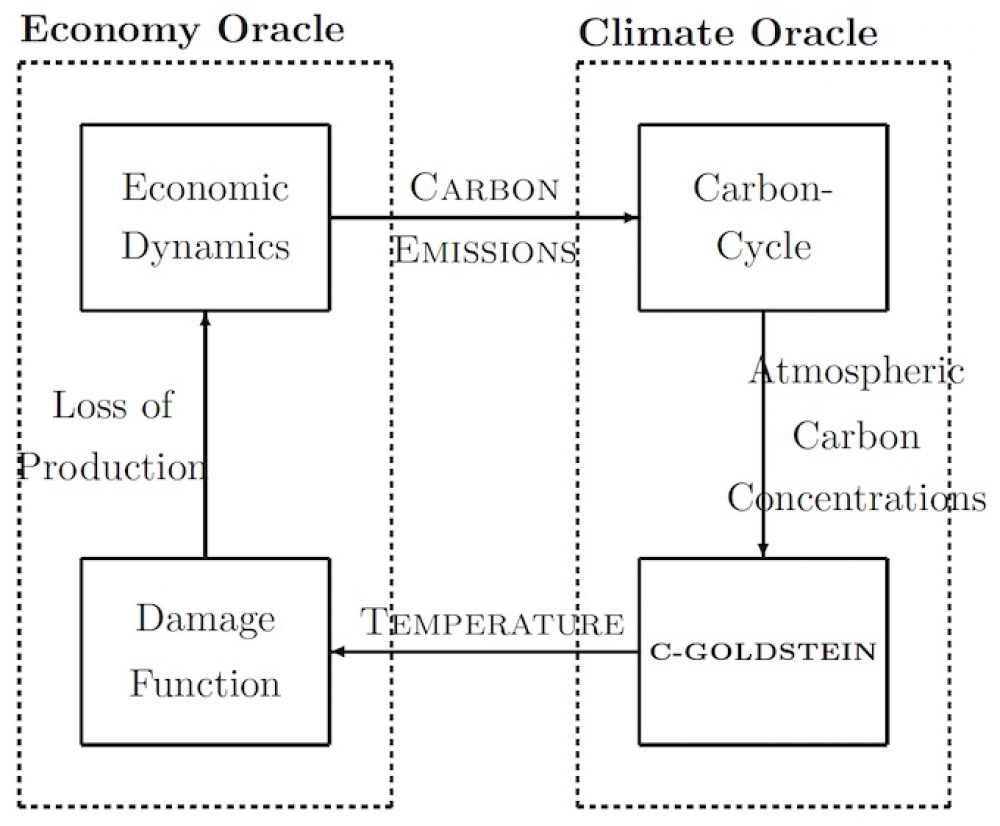
References
Beltran C., L. Drouet, N. R. Edwards, A. Haurie, J.-P. Vial and D. S. Zachary, An Oracle Method to Couple Climate and Economic Dynamics, Chap. 3 in A. Haurie and L. Viguier (eds.), The Coupling of Climate and Economic Dynamics, Springer, 2005.
Drouet, L., Edwards, N. R. and Haurie, A. Coupling climate and economic models in a cost-benefit framework: A convex optimisation approach. Environmental Modeling and Assessment, 11, 2 (2006).
Bahn, O. and Drouet, L and Edwards, N.R. and Haurie, A. and Knutti, R., Kypreos, S., Stocker, T.F. and Vial, J.-P., (2006), The coupling of optimal economic growth and climate dynamics, Climatic Change, Volume 79, Numbers 1-2 /, pp. 103-119, November, 2006.
Drouet L., Haurie A., Moresino F., Vial J.-P., Vielle M. and Viguier L., An oracle based method to compute a coupled equilibrium in a model of international climate policy, Computational Management Science, Vol. 5 (1–2) pp. 119-140, 2008.
Results
The graphs below summarise the results of the coupling between DICE-99, the "Economy" oracle, and C-Goldstein, a 3D climate model of medium complexity. The cost-benefit approach uses the damage representation provided by DICE-99. The time horizon is 400 years. It can be seen that the coupled optimization of the two models gives results that differ from those obtained with DICE-99 alone. However, the temperature increase is almost 2oC at the end of the 21st century and will rise to 3oC in the following centuries.
